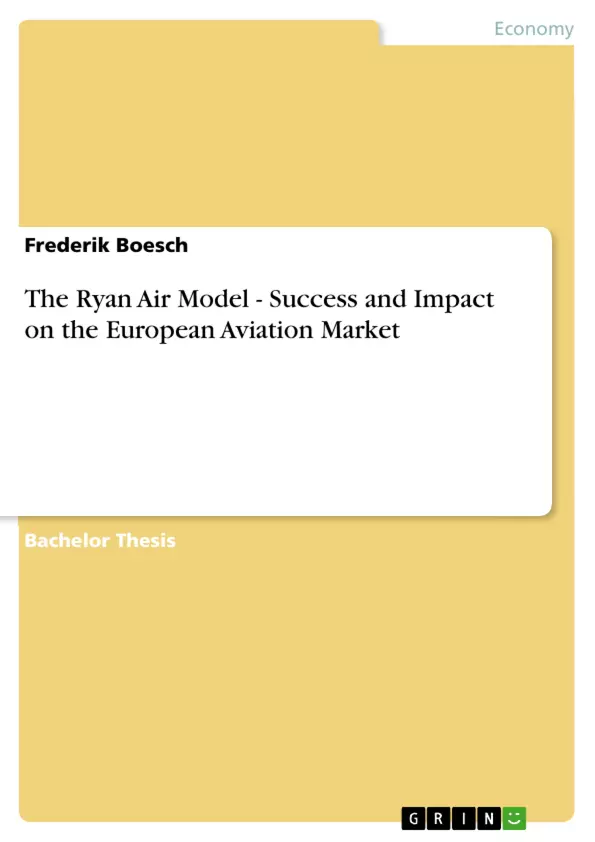During the past 15 years, there has been a considerable increase in the share of air travel within Europe that is carried out by low-cost airlines. These new airlines apply the most drastic cost saving measures in order to drive air fares down to a minimum. This paper will first explore the deregulation process of the European aviation market which was the precondition for the emergence of low-fare carriers in the early 1990s. It will then take a closer look at Ryanair, the current low-cost leader in Europe and describe its history, the elements of this distinct business model, its successes, and also some limitations. The last part of the paper will concentrate on the impact that low-fare airlines like Ryanair have on the aviation market. It will explore the changes on the market that can be expected in the long-run and will pay attention to the question if and how traditional full service carriers can respond to the increased competition.
Table of Contents
- Introduction
- Emergence of Low-Fare Airlines
- Precondition: Deregulation of the European Aviation Market
- Emergence of Low-Fare Airlines in the United States
- Emergence of Low-Fare Airlines in Europe
- The European Low-Fare Leader: Ryanair
- History
- The Business Model
- Success of the Model
- Limitations of the Model
- Impact on the European Aviation Market
- Conclusion
Objectives and Key Themes
This paper examines the emergence and impact of low-fare airlines (LFAs) on the European aviation market. The focus is on Ryanair, the leading LFA in Europe, and its unique business model. The paper aims to explore the preconditions for the emergence of LFAs, the key elements of Ryanair's success, and the potential long-term effects on the European airline industry.
- Deregulation of the European aviation market
- The rise of low-fare airlines
- Ryanair's business model and its impact on the market
- The competitive landscape in the European aviation market
- The future of the European airline industry
Chapter Summaries
- Introduction: The paper introduces the concept of low-fare airlines (LFAs) and their impact on the traditional airline industry. It highlights the rise of LFAs in Europe and the competitive pressures they pose on established carriers.
- Emergence of Low-Fare Airlines: This chapter explores the deregulation process of the European aviation market, which paved the way for the emergence of LFAs. It discusses the role of the European Commission and the impact of bilateral agreements between EU countries.
- The European Low-Fare Leader: Ryanair: This chapter focuses on Ryanair, the leading LFA in Europe, and its history, business model, and success factors. It analyzes the key elements of Ryanair's cost-saving strategies and its impact on the market.
- Impact on the European Aviation Market: This chapter examines the broader impact of LFAs on the European aviation market, analyzing the changes in competition, pricing, and market share. It explores the challenges faced by traditional full-service carriers in adapting to the changing environment.
Keywords
This paper focuses on the European aviation market, specifically low-fare airlines, deregulation, Ryanair, business model, cost-saving measures, competition, impact on market share, and the future of the airline industry.
- Quote paper
- Frederik Boesch (Author), 2005, The Ryan Air Model - Success and Impact on the European Aviation Market, Munich, GRIN Verlag, https://www.grin.com/document/50631



